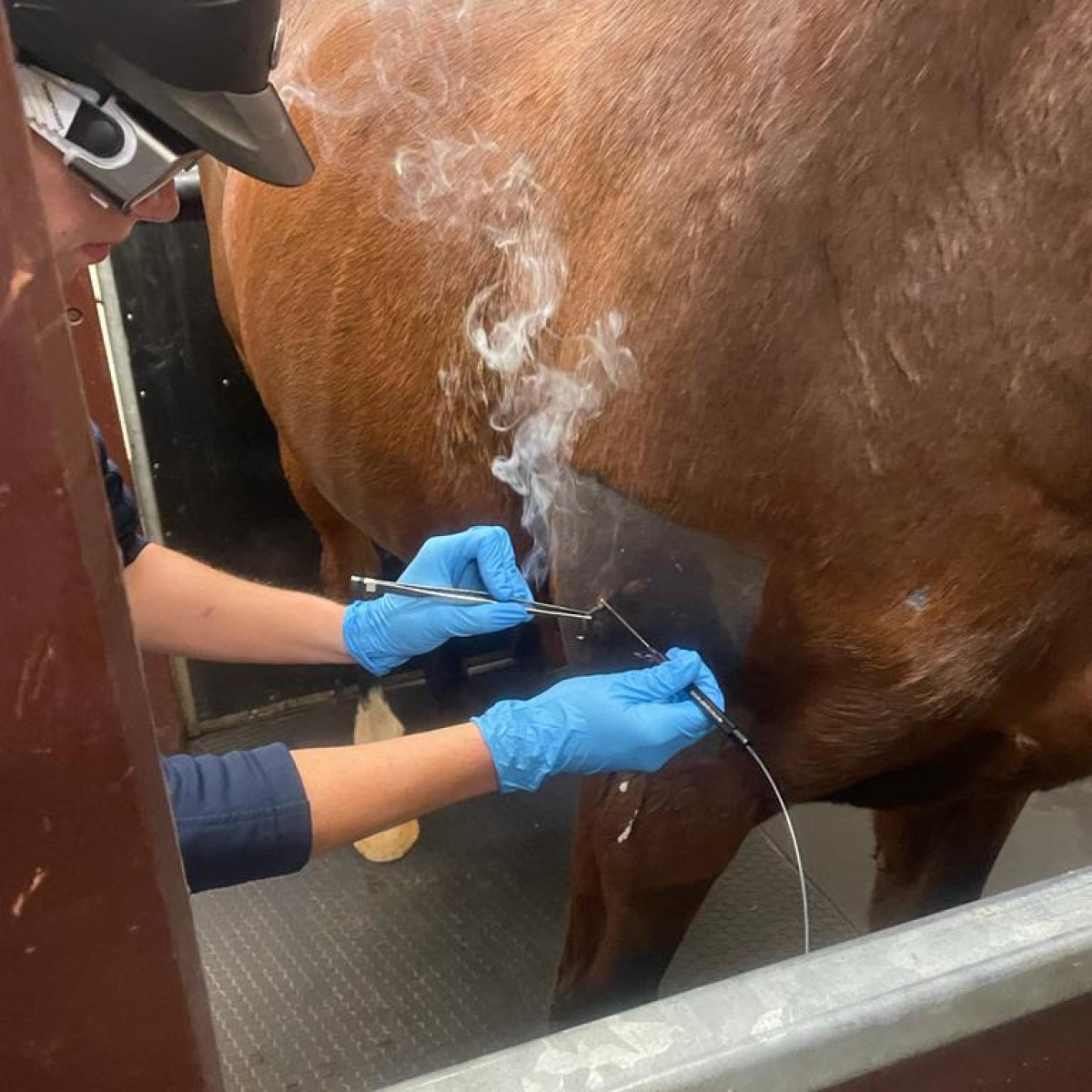Why Equine Therapy is Becoming a Preferred Alternative for Emotional Health
Wiki Article
Exactly How Laser Therapy in Horse Treatment Is Revolutionizing Vet Look After Steeds
Laser treatment has emerged as a transformative method in equine veterinary care, supplying a non-invasive solution that accelerates healing and boosts general wellness. The portability and convenience of laser treatment devices even more emphasize their expanding indispensability among veterinarians.Recognizing Laser Therapy

The innovation behind laser treatment is based in the concept of photochemistry, where photons are absorbed by chromophores within cells, causing enhanced ATP manufacturing and inflection of responsive oxygen varieties (Equine Therapy). This, in turn, advertises mobile proliferation, lowers swelling, and increases healing. Veterinary practitioners utilize different kinds of lasers, consisting of low-level lasers (LLLT) and high-power Course IV lasers, depending upon the particular therapeutic goals and the nature of the equine condition being dealt with
Various laser wavelengths and power settings are thoroughly picked to target numerous cells midsts and achieve preferred scientific results. Safety and security protocols are vital, as incorrect usage can bring about thermal damages or suboptimal therapeutic results. Therefore, a thorough understanding of laser therapy's systems and applications is crucial for its reliable execution in equine veterinary practice.
Benefits for Equine Wellness
The myriad benefits of laser treatment for equine wellness encompass enhanced healing, pain reduction, and enhanced movement. This advanced therapy method leverages details wavelengths of light to pass through cells, boosting mobile function and promoting fast tissue fixing. The non-invasive nature of laser therapy guarantees marginal stress and pain for the equine, assisting in a smoother recovery process.
Boosted healing is just one of the primary benefits, as laser therapy increases cellular regrowth and collagen synthesis. This results in quicker recuperation times from injuries and medical treatments. Pain reduction is accomplished via the anti-inflammatory results of laser treatment, which lowers swelling and reduces the manufacturing of pain-inducing chemicals. Because of this, equines experience considerable remedy for chronic and sharp pain problems.
Enhanced mobility is one more critical benefit, particularly for efficiency and functioning horses. By decreasing swelling and pain, and boosting cells fixing, laser treatment assists in bring back joint feature and muscle flexibility. The advancing effect of these advantages is not just a quicker return to normal task however additionally a general enhancement in the horse's quality of life. Hence, laser therapy stands as a transformative tool in modern-day horse vet treatment.
Common Conditions Treated
Laser treatment has emerged as a flexible therapy choice for a selection of typical equine problems. Among these, musculoskeletal injuries are particularly open to laser therapy. Equine Therapy. Soft cells injuries, such as tendonitis and ligament strains, take advantage of the anti-inflammatory and analgesic impacts of laser therapies, which accelerate healing and lower discomfort. Furthermore, laser therapy is effective for conditions like osteo arthritis, where it assists alleviate joint swelling and promote cells fixing.Wound administration is an additional location where laser Visit This Link therapy has actually revealed substantial assurance. Chronic injuries or slow-healing abscess can be particularly challenging in steeds, but laser therapy boosts cellular regrowth and boosts blood flow, hence speeding up the healing procedure. Additionally, laser therapies have actually been successfully utilized in taking care of hoof problems such as laminitis and abscesses, minimizing discomfort and advertising faster healing.

Innovation Behind Laser Therapy
Past the myriad conditions treatable with laser treatment, the modern technology itself merits closer assessment. At the heart of laser treatment is making use of specific wavelengths of light to pass through cells and evoke biological responses. These wavelengths, usually varying from 600 to 1000 nanometers, are uniquely taken in by chromophores in the skin, muscle mass, and other tissues, prompting a waterfall of cellular events.Laser tools utilized in veterinary medicine often make use of low-level laser treatment (LLLT) or cold laser treatment. Unlike high-powered medical lasers, these gadgets operate at reduced energy degrees, maximizing restorative benefits while decreasing thermal damages. The energy from the laser light boosts adenosine triphosphate (ATP) manufacturing, enhances mobile metabolic process, and speeds up tissue fixing processes.

Success Stories and Situation Researches

Showcasing the concrete advantages of laser treatment, various success tales and study illuminate its transformative effect on equine health and wellness. One such situation entails a pedigreed racehorse suffering from chronic tendonitis. Conventional treatments generated very little enhancement, however after incorporating laser therapy into the regimen, the horse exhibited significant decreases in swelling and discomfort within weeks, eventually returning to competitive racing.
Another engaging instance includes a dressage equine identified with severe pain in the back, limiting its performance. A vet group employed low-level laser therapy (LLLT) to target the inflamed areas, leading to significant improvement in versatility and a significant reduction in discomfort. Over several sessions, the steed reclaimed its peak type, showcasing the efficacy of laser treatment in resolving bone and joint issues.
Additionally, a research carried out at a leading equine clinic examined 50 steeds with different soft tissue injuries treated with laser treatment. The results were striking: 85% of the equines demonstrated increased recovery times and improved mobility. These instances highlight the versatility and performance of laser therapy in equine medication, using a non-invasive, scientifically-backed method to boosting healing and efficiency in equines.
Verdict
Laser therapy is revolutionizing equine vet care by giving a non-invasive treatment that accelerates recovery, reduces swelling, and minimizes pain. With its performance in treating an array of conditions, from bone and joint injuries to chronic conditions like osteo visit this page arthritis, this innovation significantly improves equine wellness and mobility. The transportability and adaptability of laser therapy better underscore its transformative effect on vet practices, solidifying its duty as a vital device in modern equine health care.Report this wiki page